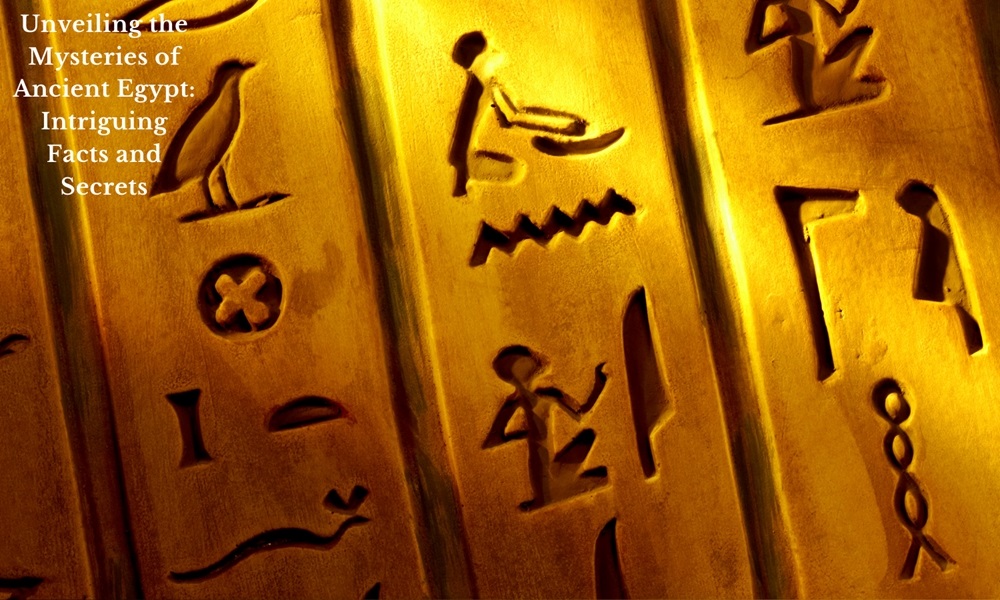
Ancient Egypt, a civilization that flourished along the banks of the Nile River for over three thousand years, continues to captivate the world with its profound mysteries and remarkable achievements. This article delves into some of the most fascinating aspects of this ancient civilization, shedding light on its culture, achievements, and enduring legacy.
One of the most iconic symbols of Ancient Egypt is its majestic pyramids, particularly the Great Pyramid of Giza. Built as tombs for pharaohs, these monumental structures are a testament to the Egyptians' architectural genius and their beliefs in the afterlife. The Great Pyramid, one of the Seven Wonders of the Ancient World, was the tallest man-made structure for over 3,800 years. Interestingly, the exact methods used in its construction remain a subject of debate among historians and archaeologists.
The Sphinx, another enigmatic symbol of Ancient Egypt, stands guard near the Great Pyramids. Carved from a single piece of limestone, the Sphinx, with the body of a lion and the head of a human, is believed to represent the pharaoh Khafre, though its true origin and purpose are still shrouded in mystery.
Pharaohs, the rulers of Ancient Egypt, were considered gods on earth. They wielded absolute power and were central to Egyptian society and religion. The most famous of these is perhaps Tutankhamun, whose tomb, discovered virtually intact in 1922, revealed a wealth of information and artifacts that have provided invaluable insights into Egyptian culture and burial practices.
Hieroglyphics, the writing system of Ancient Egypt, was a complex mix of logographic and alphabetic elements. Hieroglyphs were used for everything from monumental inscriptions to religious texts. The Rosetta Stone, discovered in 1799, was instrumental in deciphering these mysterious symbols, unlocking the secrets of Egyptian literature and history.
Mummification, a process of preserving the body after death, was a crucial aspect of Egyptian beliefs about the afterlife. The Egyptians believed that preserving the body was essential for the soul to enter the afterlife, leading to the development of elaborate mummification techniques and the construction of magnificent tombs to house these mummies.
The Nile River was the lifeline of Ancient Egypt, providing a fertile valley for agriculture in an otherwise desert region. The annual flooding of the Nile deposited rich, fertile mud along its banks, allowing the Egyptians to grow crops and sustain their civilization. This river was so integral to their way of life that it was even worshiped as a god.
Ancient Egyptian gods and goddesses numbered in the hundreds, each with their own unique roles and attributes. Among the most well-known are Ra, the sun god; Isis, the goddess of magic and motherhood; and Osiris, the god of the afterlife. These deities were central to Egyptian religion, which involved complex rituals and offerings to appease the gods and ensure cosmic order.
The art of Ancient Egypt, characterized by its highly stylized and symbolic nature, was profoundly influenced by their religious and philosophical beliefs. This art was not merely decorative but served a functional purpose, often related to religious rituals or funerary practices.
Women in Ancient Egypt enjoyed a higher status and more legal rights compared to their counterparts in other ancient civilizations. They could own property, initiate divorce, and were actively involved in social, religious, and political life.
Advancements in medicine were another remarkable aspect of Ancient Egypt. The Egyptians practiced surgery and had an extensive understanding of herbal remedies. The Ebers Papyrus, dating back to 1550 BC, is one of the oldest and most important medical documents from ancient times, detailing treatments for various ailments.
The legacy of Ancient Egypt extends far beyond its monumental architecture and art. The civilization's contributions to mathematics, astronomy, and medicine have had a lasting impact on the world. The 365-day calendar, for instance, is an Egyptian innovation that is still in use today.
In conclusion, Ancient Egypt's civilization, rich in culture, religion, and scientific achievement, continues to fascinate and inspire. Its enduring monuments, mysterious hieroglyphics, and profound cultural impact make it one of the most remarkable and studied civilizations in human history. The legacy of the ancient Egyptians, from their monumental architecture to their contributions to various fields of knowledge, remains an enduring testament to their ingenuity and understanding of the world around them.